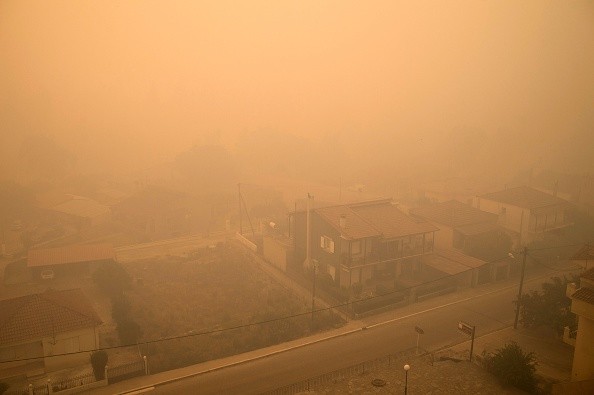Inhaling wildfire smoke may affect your body's immunity towards coronavirus. A recent study discovered that excess exposure to fine particulate matter in wildfire smoke could lead to more covid-19 cases and deaths.
During an unprecedented fire season in the U.S. West, a new study reveals that air pollution from 2020 wildfires in Washington, California, and Oregon was linked to a high risk of getting covid-19 and even dying from it.
For the new study which was released on Friday in Science Advances, researchers looked into publicly existing data on the coronavirus cases and deaths from about 92 counties across Washington, California, and Oregon.

They covered the area the year's wildfires affected the most - throughout 277 days in 2020. Then, they made a comparison of the numbers with regional public data on levels of PM2.5 - fine particulate matter - in the atmosphere from a similar span.
In Calaveras county of California which contains about 45,500 residents, there were 22 deaths caused by covid-19 during the period they carried out the study. About 77% of those deaths took place following the presence of 28 successive days of wildfire smoke.
Wildfire Smoke Linked to Covid-19 Deaths
Increased PM2.5 from smoke was powerfully associated with more covid-19 deaths in Butte County. Also, the authors discovered there were 41% more deaths and this would have been lesser in the absence of the smoke. Similar patterns were noticed in other counties
To pinpoint how exposure to fine particulate matter could have affected covid-19 cases and deaths, the authors studied the amount of pollution residents were prone to in the 28 days before they test positive or died. That is to say, if a person passes on because of covid-19 on the 1st of April, the researchers check for pollution levels one month prior to their death.
Then, with the use of data from the hazard mapping system of the National Oceanic and Atmospheric Administration, the researchers were able to discover the place and the time residents in the data set were prone to risky levels of smoke from wildfires.

PM2.5 Measurement
A postdoctoral research fellow in biostatistics at Harvard University whose name is Kevin Josey explained: "We were able to create an indicator that says, This day was a wildfire smoke day, so we know that any PM2.5 measurement measured on that day ... that is probably attributable to wildfire smoke."
PM2.5 doesn't come from wildfires only; infrastructure including fossil fuel plants and highways also produces it. So to see the quantity of particulate matter in the data set was caused by wildfire smoke, the authors made a comparison between levels of PM2.5 on days there was wildfire to levels on days there was no wildfire, from 2016 through 2019.
Josey said: "We could then ask, what would be a good expectation of what those PM2.5 measurements should have been, if there weren't any wildfires? And we could then see how much excess pollution the smoke caused."
Related Article : Extremely Toxic: Wildfire Smoke Spreading Across US Contains Dangerous Levels of Metals
For more news, updates about wildfire smoke, covid-19 and similar topics don't forget to follow Nature World News!
© 2025 NatureWorldNews.com All rights reserved. Do not reproduce without permission.





